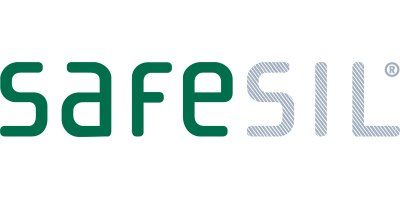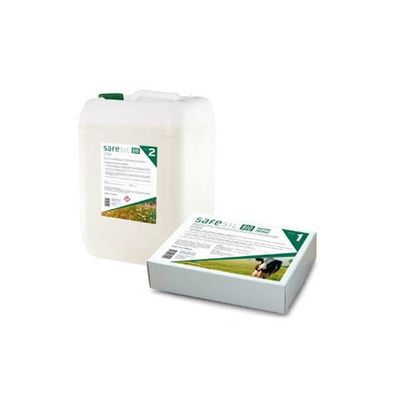


Safesil Bio - Salt-based Ensiling Additive Contains
Safesil Bio comprises two parts, a lactic acid-producing bacterium of the Lactobacillus plantarum strain, and a liquid citrate. The bacteria quickly lower the pH value, which reduces losses during the ensiling process. Safesil Bio is a permitted product in organic farming.
Safesil Bio comprises two parts, a lactic acid-producing bacterium of the Lactobacillus plantarum strain, and a liquid citrate. The bacteria quickly lower the pH value, which reduces losses during the ensiling process.
During ensilation, the citrate is converted to acetic acid and diacetyl without costly energy losses. The acetic acid and diacetyl strongly inhibit yeast growth.
The result is an excellent silage with a significantly improved feed stability.
The concentration of the additive is essential for function, and at the recommended dosage, Safesil Bio provides no fewer than 1 million lactic acid bacteria/gramme of green material.
Safesil Bio is a permitted product in organic cultivation.
- PACKAGING :
- Part 1: 4 x 250 g freeze-dried bacteria
- Part 2: 1 x 25 litres citrate for treating 100 tonnes of green material
- CROPS : Grass, clover, maize and whole-grain silage.
- STORAGE SYSTEM : All storage systems
- USE : Safesil Bio (Inoculants + citrate): DM > 28% In wet silage, only part 1: Inoculants in Safesil
- Bio: DM < 28%
- STORAGE LIFE &
- STORAGE :
- 2-years’ storage life from the date of production.
- Part 1: The inoculants must be stored cold and dry. Refrigerate for extended storage.
- Part 2: The citrate should not be stored in direct sunlight. Store between 4-25 °C. Store beyond the reach of children.
- CONTENTS :
- Part 1: Lactobacillus plantarum NCIMB 40027 1k20743 (provides 1 million cfu/g green material)
- Part 2: Citric acid (E330)
- DOSAGE : The recommended mixture provides a dosage of 2 litres/tonne green material.
- CLASSIFICATION :
- Part 1: The inoculant has no hazard classification.
- Part 2: The citrate causes serious eye irritation.
